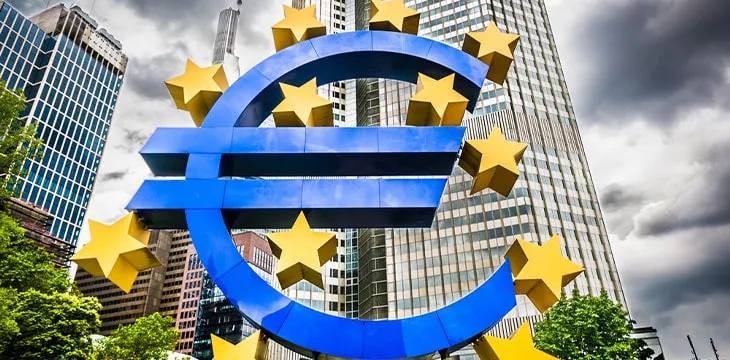|
Getting your Trinity Audio player ready...
|
The European Central Bank (ECB), the arm of the European Union (EU) that works with the central banks of member nations, has published a report presenting the privacy options it is considering in the development of a digital euro under the Eurosystems CBDC program.
Per the nine-page document, which is a result of the ECB’s consultation with the public from last year, three main privacy options are being considered for the design of the central bank digital currency (CBDC).
In the first scenario under consideration, the CBDC will be designed to imitate current digital transactions where only intermediaries like commercial banks will have access to transaction data.
The second option will allow for selective privacy by making low-value/low-risk transactions to be devoid of information collection by intermediaries. While the last option will allow for even greater privacy by enabling offline functionality for low-value/low-risk transactions.
While each option still requires user checks by intermediaries and central banks during onboarding, the ECB stated that the first scenario is the currently applicable baseline it is working with.
The presentation also added that for the ECB, user anonymity is not a desirable feature, as it would make it impossible to control the amount of the CBDC in circulation and to prevent money laundering.
Observer points out privacy concerns in the options
The presentation has been getting reactions from market observers. Patrick Hansen, a crypto venture adviser and a regular commentator on the EU digital currency policy, asserted that the options do not offer any significant benefits over already existing digital means of payments.
1/ Roughly a year ago, EU citizens responded to the ECB consultation with a clear message that privacy is by far the most important of any digital euro features.
The ECB has now published the privacy options on the table in a new presentation 👇 https://t.co/sRcaqr89BV pic.twitter.com/WmO4WjYGfk
— Patrick Hansen (@paddi_hansen) May 3, 2022
Hansen wrote that in his opinion, the ECB is only willing to go to a certain extent to implement user privacy. Going by the presentation, the digital Euro is not likely to replace the properties of cash in the digital world. He said:
“And if it can’t perfectly replace the properties of cash in the digital world, this naturally raises the big question, at least for me personally, of what use/benefit a central bank digital euro offers vs. existing digital means of payments?”
However, Hansen also considers it positive that the ECB is considering the privacy options at all and the trade-off in AML and CFT control they would mean. He has long been skeptical of the EU’s digital currency policy direction.
This year has seen the EU make several digital currency policies already. One of these was a draft rule to increase monitoring of digital currency transactions by requiring exchanges and custodial wallet operators to collect user information.
According to Bloomberg, the body is calling for even tighter regulations for the digital currency market. The bloc’s stance on the industry has been that it is a threat to the EU due to its volatility and fraud risks.
To learn more about central bank digital currencies and some of the design decisions that need to be considered when creating and launching it, read nChain’s CBDC playbook.
Watch: CoinGeek New York panel, The future of digital asset trading

 07-08-2025
07-08-2025 





